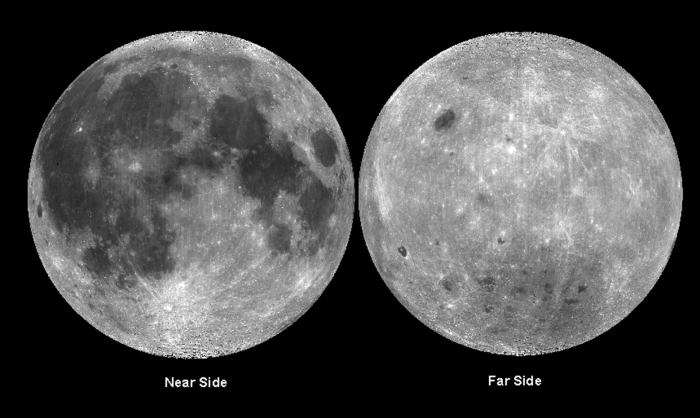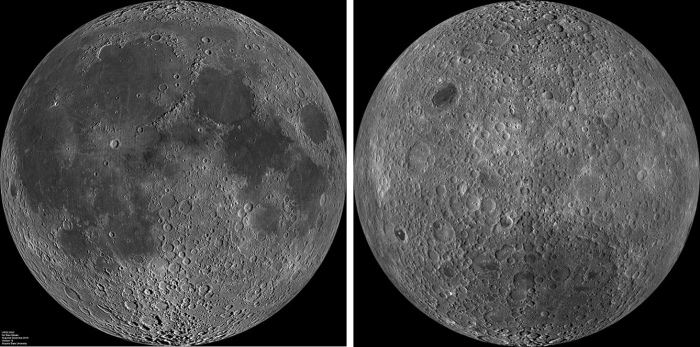Lunar hemisphere visible from earth crossword clue – Unveiling the secrets of the lunar hemisphere visible from Earth, this exploration delves into the celestial mechanics, scientific discoveries, and cultural significance of this enigmatic celestial body. As we embark on this journey, we will unravel the mysteries that have captivated astronomers and inspired dreamers for centuries.
From its unique characteristics to its profound impact on our understanding of the universe, the visible lunar hemisphere has played a pivotal role in shaping our perception of our place in the cosmos. Join us as we explore the fascinating world of this celestial enigma, unlocking its secrets and unraveling its captivating story.
Lunar Hemisphere Visible from Earth

The Moon, Earth’s celestial companion, presents a fascinating spectacle in the night sky. However, only one side of the Moon is ever visible from our planet, a phenomenon that has captivated astronomers and inspired generations of scientists and artists alike.
Hemisphere Definition
In astronomy, a hemisphere refers to half of a celestial body, typically divided along a plane. Earth has two hemispheres: the Northern Hemisphere and the Southern Hemisphere, separated by the equator. Similarly, the Moon also has two hemispheres: the near side, which faces Earth, and the far side, which is permanently turned away from us.
Lunar Hemisphere
The lunar hemisphere visible from Earth is a unique and intriguing celestial feature. Its surface is characterized by vast, dark plains called maria, which are the result of ancient volcanic eruptions. It also features numerous craters, mountains, and other geological formations that have been shaped by billions of years of impacts and volcanic activity.
The most striking aspect of the visible lunar hemisphere is its permanently illuminated appearance. This is due to a phenomenon known as tidal locking, which occurs when a celestial body’s rotation period matches its orbital period around another body. In the case of the Moon, its rotation period is synchronized with its orbital period around Earth, resulting in the same side always facing us.
Reasons for Visibility, Lunar hemisphere visible from earth crossword clue
Several factors contribute to the visibility of only one lunar hemisphere from Earth. These include:
- Tidal locking:As mentioned earlier, the Moon’s rotation is synchronized with its orbit, causing the same side to always face Earth.
- Elliptical orbit:The Moon’s orbit around Earth is not perfectly circular but slightly elliptical. This means that the Moon’s distance from Earth varies throughout its orbit, affecting the amount of its surface that is illuminated.
- Moon’s inclination:The Moon’s orbit is tilted with respect to Earth’s orbit around the Sun. This tilt results in different parts of the lunar hemisphere being illuminated at different times of the year.
Historical Significance
The discovery and understanding of the Moon’s visible hemisphere have played a pivotal role in astronomy and space exploration. Early astronomers, such as Galileo Galilei, used telescopes to observe the Moon’s surface, leading to the realization that it was not a smooth, perfect sphere but a complex and varied celestial body.
The visible lunar hemisphere has also been a target for numerous space missions, including the Apollo program, which landed humans on the Moon for the first time. These missions have provided invaluable scientific data and insights into the Moon’s composition, geology, and evolution.
Cultural and Artistic Representations
The visible lunar hemisphere has held cultural and artistic significance for centuries. It has been depicted in literature, art, and popular culture, inspiring poets, artists, and musicians alike.
In ancient cultures, the Moon was often associated with deities and celestial events. The waxing and waning of the Moon has been used to mark time and seasons, and the visible lunar hemisphere has been a source of fascination and inspiration for countless generations.
Scientific Implications
Studying the visible lunar hemisphere has had profound scientific implications. It has allowed scientists to:
- Determine the Moon’s composition and geology.
- Understand the processes that have shaped the Moon’s surface.
- Estimate the age of the Moon and its geological formations.
- Investigate the effects of space weathering on the lunar surface.
Future Exploration
The visible lunar hemisphere will continue to play a crucial role in future space exploration missions. Planned missions, such as NASA’s Artemis program, aim to return humans to the Moon and establish a sustainable presence there.
Future exploration of the visible lunar hemisphere will provide further opportunities to study its unique characteristics, search for resources, and advance our understanding of the Moon and its place in our solar system.
Questions Often Asked: Lunar Hemisphere Visible From Earth Crossword Clue
Why is only one side of the Moon visible from Earth?
Due to a phenomenon known as tidal locking, the Moon’s rotation and revolution are synchronized, resulting in the same side of the Moon always facing Earth.
What factors determine the visibility of the Moon’s hemisphere from Earth?
The Moon’s orbital position, the tilt of its axis, and the Earth’s position relative to the Sun all influence the visibility of the lunar hemisphere.
What is the historical significance of understanding the visible lunar hemisphere?
Early observations of the lunar hemisphere laid the foundation for astronomy and space exploration, providing insights into celestial mechanics and the nature of the Moon.


